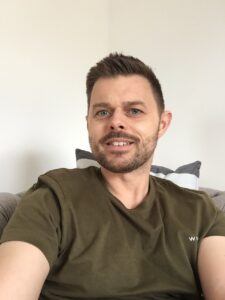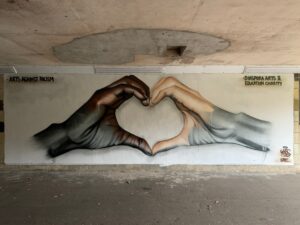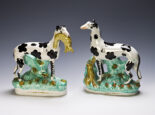Recovering Culture

'Recovery’ is a word on everyone’s lips at the moment – for businesses, for communities, for economies. Especially hard hit has been the cultural life of our society, which in some quarters has been brought close to a standstill by the pandemic. Even before COVID, it was looking like we had reached a significant moment in the evolution of Peterborough’s cultural life; Vivacity had handed responsibility for the city’s key venues and services back to the Council, and Peterborough’s new, independent, city-centre university had just been announced. So, where do we go from here? What is being done to bring about that recovery, and is it a return to business as usual, or a shift to something new? Moment editor Toby Venables talked to culture specialist Sarah Tanburn, who has been leading on public consultation for the formation of Peterborough’s new cultural strategy, and Jamie Fenton, Peterborough City Council’s Partnership Manager for Culture, Sport and Leisure.
Peterborough has had many cultural strategies during its development, but clearly this one is different. Obviously it’s about getting things back on track, but has the forced reset of COVID also presented an opportunity – a chance to rethink things, perhaps radically?
 Sarah: I think it’s a really interesting thing… We did most of the consultation for the cultural strategy between January and April, when Peterborough was in level four – complete lockdown. And I asked everyone I spoke to what gave them joy in that time, and two things came through really clearly.
Sarah: I think it’s a really interesting thing… We did most of the consultation for the cultural strategy between January and April, when Peterborough was in level four – complete lockdown. And I asked everyone I spoke to what gave them joy in that time, and two things came through really clearly.
One was creativity, in its broadest sense, so that might be singing in a choir, it might be growing things, it might be drawing, but making things. And the other was nature and being outside. Lots of us, I think, walked a lot more, got outside and spent time in nature – even if it was just in our local park around the corner. Those two things were very, very important to people in Peterborough, at all ages and across a whole range of communities. And so what I hear now is people saying:
‘I want more of that. I want the time in my life which enables those things, and I will rearrange my life to enable more of those things…’
So, I think it has certainly been a period of forced reflection. And it has coincided with all sorts of other things that have also shifted perspectives – like Afghanistan recently, which I think made people think ‘Maybe we should recognise how lucky we are…’ Black Lives Matter happened while we were doing this, too, and that caused a lot of people to think very carefully about what they chose to watch on television. Was the audience for Small Axe made, or was its audience bigger, because of Black Lives Matter, for instance? So, there are other convulsions besides COVID, but all of them together have generated this desire by people to be reflective, and to find more joy.
The word that came out again and again in conversations was ‘joy’, and that, perhaps, seems strange in the middle of lockdown.
 Jamie: Sarah has done absolutely excellent work with all of the consultation work, driving this forward, pulling people together virtually. And the feedback has been phenomenal. It really has in terms of what we’ve learned. And we’ve also got to remember in this whole process, as Sarah joined, the cultural scene had undergone a big shift from a Council point of view, because the former operator, Vivacity, had handed the keys back. So, there’s been an immense amount of work going on behind the scenes.
Jamie: Sarah has done absolutely excellent work with all of the consultation work, driving this forward, pulling people together virtually. And the feedback has been phenomenal. It really has in terms of what we’ve learned. And we’ve also got to remember in this whole process, as Sarah joined, the cultural scene had undergone a big shift from a Council point of view, because the former operator, Vivacity, had handed the keys back. So, there’s been an immense amount of work going on behind the scenes.
Sarah: I think it’s really important that the city sees this as its own thing, not something someone else has just decided for them. And we have seen very clearly how much culture really matters to people. Many people highlighted the importance of creativity and shared creative practice as part of what has brought them through this period, and that they want to hold on to that. In the consultation, people who have experienced bereavement through COVID saw quiet but creative reflection – like a drawing class – as something that supported their mental health and their process of grieving. That also supports other agendas, because frankly, it’s much cheaper to run a drawing class than to medicalise somebody for seven years.
There are a number of ways in which that relationship between cultural work and health work is really important for the good of people in the city, and also financially.
With regard to that consultation process, how do you ensure that you’re asking the right people, and have everyone involved?
Sarah: To get a taste of it – and for people to see what’s happening – there’s a website that we’ve put together (peterboroughculturalstrategy.org.uk) and on there you’ll see that we’ve done some video logs, interviewing, particularly, young people. So there are a lot of voices there. Part of the point of doing a website, for me, was to create that density of source material for people who want to be in the conversation.
Jumped Up Theatre has also just created this thing called Fierce Talent as a sounding board for younger people.
But no consultation or engagement or representation is perfect. One can only do what one can do – but the really important thing is that this is an ongoing conversation. This doesn’t end. This process has also taken longer than originally envisaged. Recovery is taking longer than we hoped. When I first got commissioned to do this work, it was last November, Peterborough wasn’t in level four, the levels had barely been thought of, the second wave hadn’t really happened yet, let alone a third wave. We didn’t have vaccinations. There are so many things that have happened in that time! So we have elongated the process a bit to allow more time. Having said that, we have tried to do two things. One is to make it a conversation that continues to evolve. I would hate to see us say,
‘Here’s the strategy done and dusted…’ because the minute you do that, it’s obsolete.
The other is to recognise that the steering group, as it currently exists, isn’t representative, so we are making recommendations about what should be a much more inclusive, resilient, long-lasting voice for culture in Peterborough – which people can see, which people can engage with, which is committed and required to have really strong relationships with people around the city, both as practitioners and as audiences.

One thing I have heard again and again with regard to recovery from the pandemic is that there may be many things we don’t actually want to go back to…
Sarah: Yes, that’s a good point. Although we have talked about recovery, and we’ve been granted money from the Welcome Back Fund and the Cultural Recovery Fund in Peterborough, I think everyone in the steering group would say:
‘No, we are not going back…’
We’re not going back to programming, which is exclusive in lots of ways. We’re not going back to a way of thinking about culture which is incredibly institutionally-bound. We want to go forward to a situation in which young people – people from ethnic minorities and rural communities in particular, but not only them – see themselves much more engaged in and reflected in the cultural life of the city. And we want to go into a situation where the growth of Peterborough is one which is culturally rich. Peterborough, like many of the new towns has a problem that its very rapid growth at certain points has been actually quite culturally poor. We haven’t had the facilities, we haven’t put the work into building community connections etc. We know that’s a problem in new towns all over England, but when we look at the next bout of growth, what is it that looks different in that conversation?
And so I think there are a number of ways in which you’re right. The recovery is about becoming better at these things.
‘Becoming better’ is a good way to describe recovery, rather than simply going back – and culture by its very nature is always moving forward. But does that make it difficult to recognise when ‘recovery’ has actually been achieved?
Sarah: I think we need to talk about ‘What would success look like?’ It would certainly look like a place that people are proud of, a place that people want to visit, to see amazing things happen. It would certainly look like somewhere which celebrated its extraordinarily rich heritage, in terms of both longevity and diversity. And it would look like a place that had a much stronger economy that was rooted in the creativity and capacity of its people. And the fourth strand would be something around Peterborough as a city which cares about its environment.
People in Peterborough are proud of the natural environment, and it sits in rural surroundings which are incredibly fragile. How do we have a culture which both celebrates that and promotes a much stronger response to the climate crisis?
I think those will be the four key areas, and then there are things that support that – a culture which is much better invested in, and which invests in the people that do creative and heritage work, at least as much as in any of the buildings. The Cathedral does need investment, and The Cresset needs a new roof, but what Peterborough really needs just as much is more time from people. Investment is an indicator, it’s not an end. Audience numbers are an end – audience numbers from new places and new communities that don’t currently engage a great deal in creativity – and an economy with a much stronger creative cultural industry sector. So, there are some very specific things, but the outcomes, as opposed to the outputs, will be around those four elements.
Jamie: Most of what Sarah has said here feeds into the Council’s corporate strategy as well. There is excellent work that’s happening, and has happened for many years in silos across the city. But in the past, people have made an effort to try and do, say, a piece of work and it’s just folded, because it’s not got the wider buy-in. And I think that’s where this has been very different. Sarah coming on board has taken that opportunity to pull it all together. But again, this is not a strategy that we print off and put in a folder on a shelf somewhere and say:
‘That’s it for another five years…’
It can’t work like that. It’s got to be an evolving piece of work that everyone’s involved in. And it continues the conversation, continues to work, continues to develop. If it doesn’t, we will be in this position again in two years. But this time, we have people who are saying we need to learn from the mistakes in the past. And that’s exactly what we are trying to do now. Members are fully engaged and supportive of the strategy, senior management within the Council embrace and understand the impact of it and what we need to do to make this work for the city – we’ve just got to make it work on the ground. And I think conversations like the one we’re having right now are really helpful, really healthy, and getting this out in your publication can only be a positive thing. We want everyone on that journey with us.

Let’s talk about Peterborough’s ambition, which sometimes has been thought to be lacking Obviously its culture is about what we already have going on, but this notion of ‘getting better’ suggests new things, new connections, new possibilities. Where do you think those opportunities lie?
Sarah: Peterborough could and should be known for its heritage. Peterborough has this extraordinary set of stories, and yet has the least visited Cathedral in England. Also it has not begun to collect, in any structured way, the stories of the many communities that came post-war. It really doesn’t talk much about that environmental heritage with the Fens and how Peterborough and Ely sit within that story.
So, there’s plenty in Peterborough to keep your heritage buff here for a weekend and have a lovely time, but though The Moment talks about it, this heritage doesn’t get promoted enough.
And secondly, Peterborough deserves to be known for an incredibly energetic DIY culture amongst a whole bunch of creative people, whether its poets or its musicians, which at the moment, doesn’t punch its weight economically, whether directly in the creative and cultural industry sector or feeding through into innovation. So you have this amazingly innovative agricultural sector, which never talks about itself locally, and yet has visitors from across Europe coming to look at it. And then you have a bunch of people in the urban area doing creative work, but not necessarily relating to that innovation. So how creativity drives innovation in the economic structure is an often overlooked thing. New Zealand’s a very interesting example of this because it’s used creativity so thoroughly and that enables this tiny country to punch way above its weight, economically. Peterborough could do better at that.

I interviewed Francis Pryor a while ago, and he asked ‘Why isn’t Peterborough like York?’ Why is it not this place where people come and they stay for a long weekend, considering what the city and surrounding area have to offer?
Sarah: It should be like York. It should be like Norwich. It should be like Nottingham with all that history. And Peterborough has a huge advantage in that it actually has the bed spaces. A lot of cities, including York, struggle for bed spaces, but Peterborough’s got an excellent business hotel offer, which isn’t fully occupied at weekends. So one core bit of its infrastructure exists, and in terms of its location, it has a brilliant opportunity. What we want is somebody to think:
‘I’ve got this meeting in Peterborough on Thursday… I’ll get the family to join me on Friday evening, and we’ll have the weekend…’
And that would start to be success.
What Peterborough doesn’t have, in relation to York, is The Shambles. There is a real long-term bit of thinking which asks Peterborough to consider that it is unique memory experience that is going to be the future of major centres. I was director in York for a while, and York has worked hard on the shift from purely retail to experiential tourism.
I think Peterborough needs to think about its centre as a place for experience, and consider what it does to address that in the face of the very rapidly changing nature of footfall retail.
Peterborough city centre’s economy has been even more retail and more chain driven than York. York’s got a very diverse and varied independent small retail sector. Peterborough has not really developed that. Here is this magnificent square and streets that run off it, and it has access to this extraordinary Cathedral and 20 acres of open space. And yet, most people in Peterborough, I suspect, think of the city centre as Queensgate.

What does it mean to try and make people think of experiential footfall rather than retail footfall?
Sarah: I don’t think anyone’s got the full answer to that. But you need to offer people an experience – including a retail experience – that they can’t get online, and they can’t get somewhere else. That uniqueness is really, really important. You need things that bring people into the city centre and while they’re there, they have a cup of coffee or they start looking at the jewellery store or they think ‘Oh yes, I’ll go book at the hairdresser to get my hair done…’ And so we’ve been putting together a programme taking us up to Christmas to do exactly that, which says:
‘Come back into the city centre. Enjoy events here, and while you’re here, find out what’s happening in the Cathedral, find out when there’ll be a market happening’ – and so on.
That’s really important. And also, in terms of recovery and health, enabling people to feel safe in public spaces – to come together as communities and celebrate together – is important. So Nene Park are talking about this Festival of Thanks in May. Those moments when people come together are really important, and we’re really missing those.
Amongst other things, COVID seems to have made people less inclined to travel, and to look more to what’s on their doorstep…
Sarah: That’s right – and we’re hoping that it will help the New Theatre for whom that’s the core business model. It was a strong message out of the consultation that people want stuff that’s local, not only in the city centre, but local to their neighbourhoods. So, particularly young people, particularly people with disabilities are keen to see stuff round the corner, walkable or easy to get to, where they can hang out. One of the young lads I spoke to said:
‘I want to hang out with my mates and see new things’.
That became a bit of a strapline for me! People don’t necessarily want to sit passively in front of the screen. We’ve been doing that for long enough. We want to see our friends, we want to spend time with them. I’ve done so much camping this year. Essentially, it’s outdoors, you know. And people want to do that. People want to see real things, and they want to do that locally.
Jamie: These points are all backed up by a Deloitte study, as well as the Westfield paper, which was actually produced prior to COVID. They’d already seen this change coming. Their model used to be about 70% retail and the rest food and beverage, and they are now going to a third retail, a third food and beverage and a third experience. The Deloitte report also talked about the decline in people going on holidays, and actually saving that money to have memories and experiences with their friends and families locally. So, there’s evidence that shift had already started, but COVID has accelerated that.
Is self-belief a problem for Peterborough?
Sarah: I think what Peterborough really struggles with it, amongst its leadership, is that it tends to be those of us who are older who take the negative view. But what struck me in talking to young people under 25 was that’s not what they’re saying.
They’re frustrated, but what they’re frustrated about is having to leave to have a career. Having to leave to get an audience. They want to stay here and do it here. Building that audience, building that receptiveness is a really big challenge, but actually there is talent, there is energy, and there are things happening. Success is not necessarily massive headlines, and headliners. It’s building that robust base of participation and audience that lasts.

One of the things that is happening is the new university. What impact do you think that will have?
Sarah: In a very crude way, it puts the place on the map. It becomes somewhere people look at to study. And something we’ve heard again and again, is
‘I have to leave to do things’.
Well, you won’t now. So it creates stickability. That is slightly unfair to UCP and City College, because they’ve been here all along, but it massively changes the offer. And I think the second thing is it’s a lot of investment, and that’s both a statement of confidence, and a statement of change. And so that’s really important. And then the other thing is more young people trying different things, wanting different things. It changes the footfall. It changes who’s in the pubs, what they drink while they’re in there. You know, it changes what they want to happen in that pub.
What else needs to change?
Sarah: Peterborough is massively diverse in terms of ethnicity, and it’s a young city. And at the moment, almost all of its leadership figures, including in the cultural sphere are white, and generally slightly older – 40 plus – and that’s problematic. When you walk into the museum, there’s that corridor, and there’s all those bewigged 18th century posh white people staring at you. Well, the museum has got a much more interesting collection than that, and it could completely change what it feels like to walk into a museum by handing over the curation of that corridor to a succession of young artists. I don’t mean to have a go at the museum at all, and in fact I know they are working on this right now. But many people will recognise that you could change the way the museum feels by changing what hangs on those walls as you walk down that corridor.
So, I think that there are really important discussions such as that to be had over the next few months and years. And if you’re going to spend money on culture, first of all, spend it on people, not on things – spend it on the people who make the connections.
















